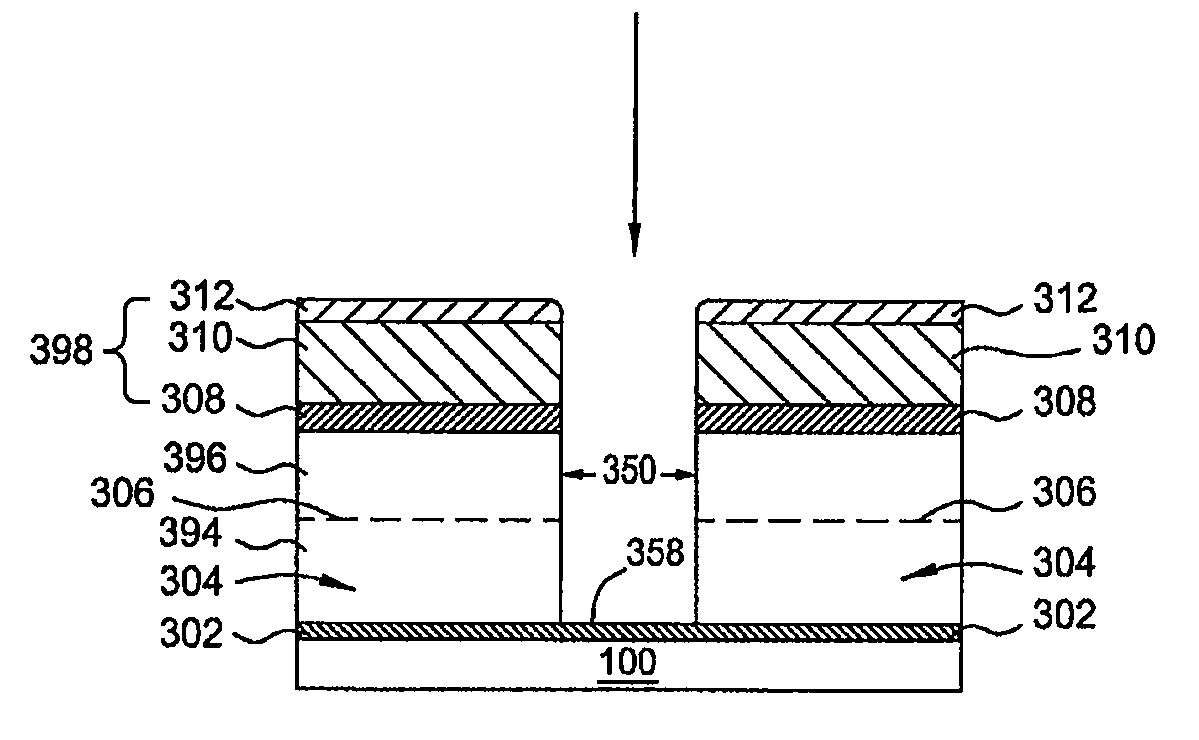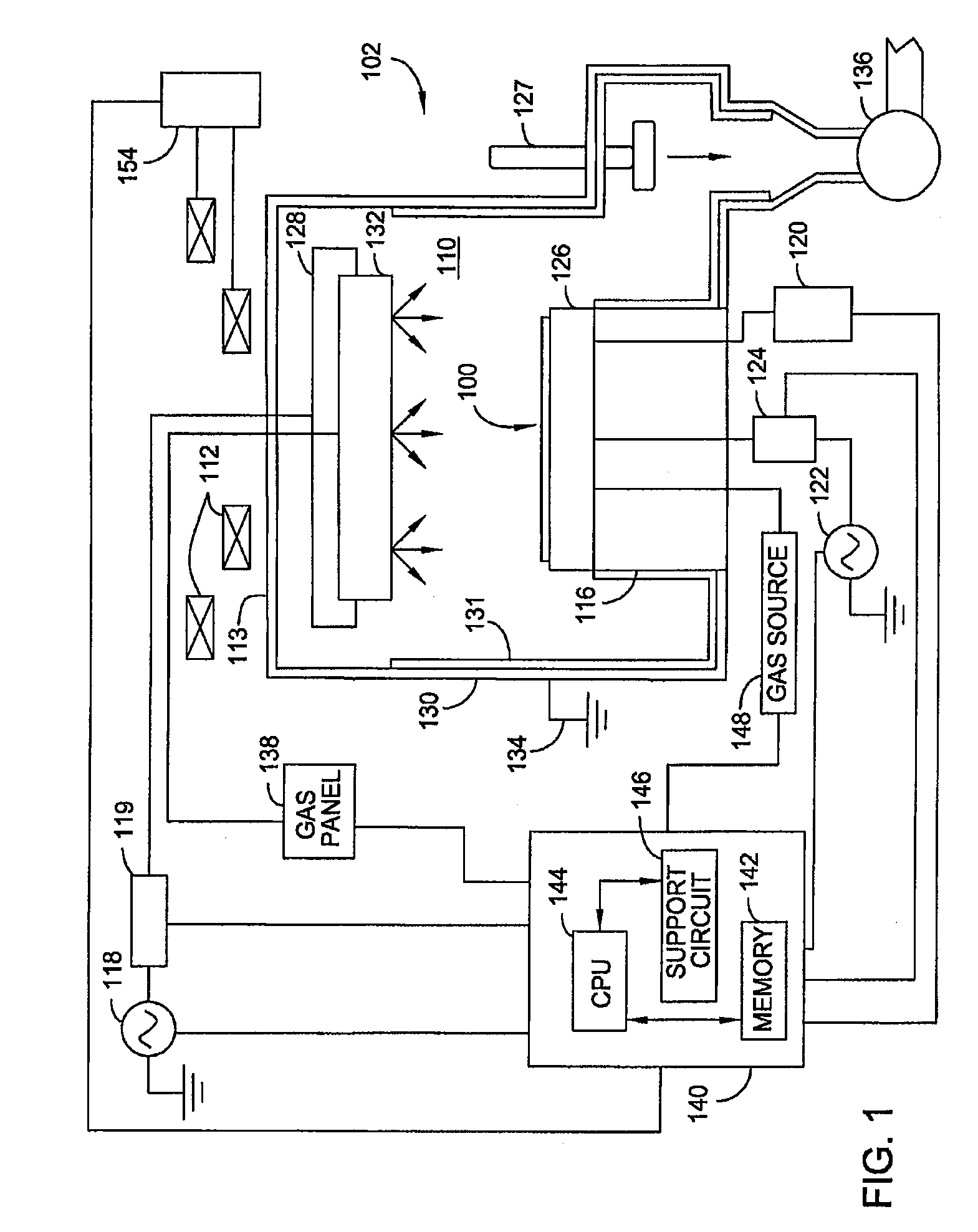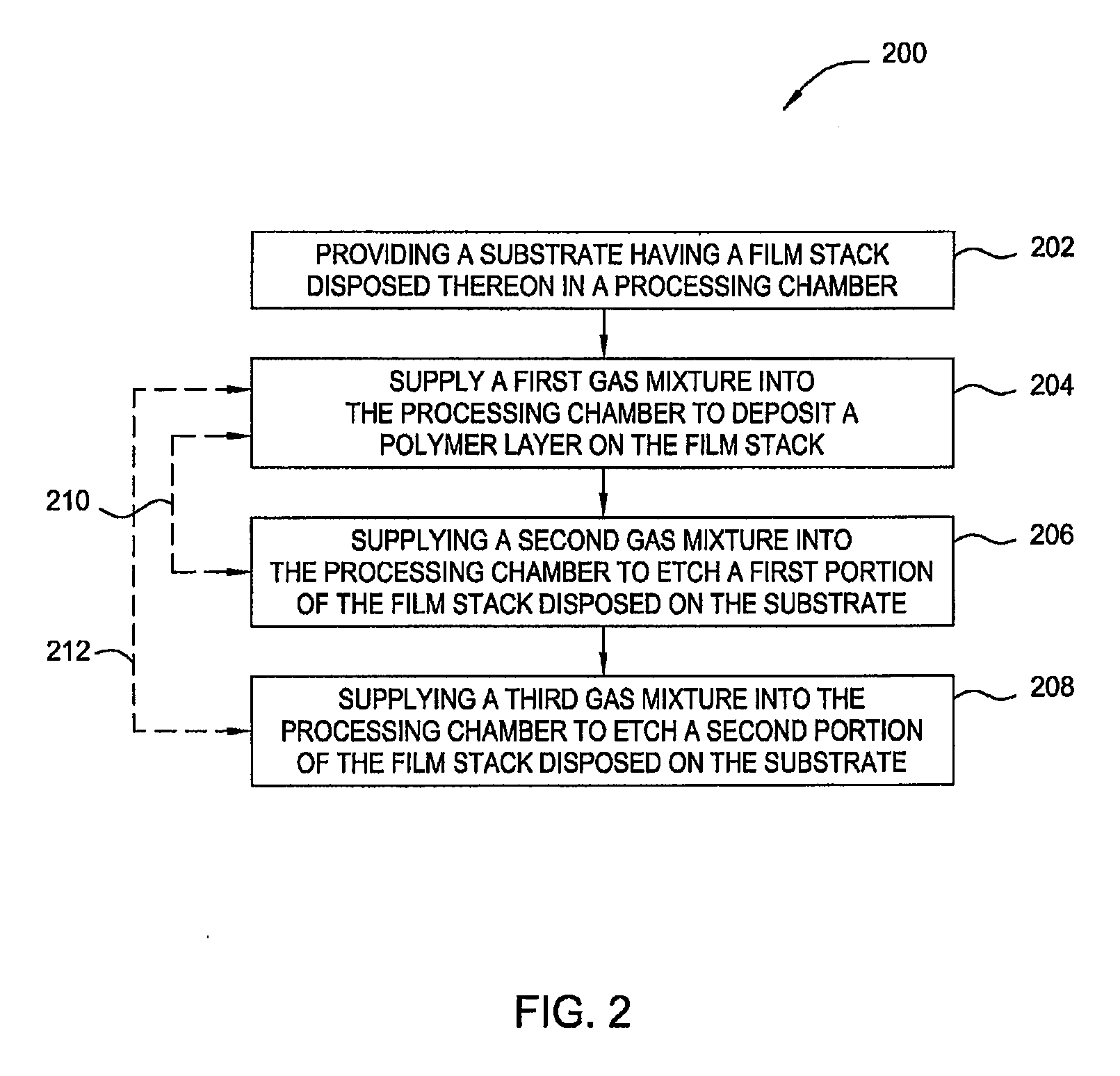Hardmask open process with enhanced CD space shrink and reduction
a technology of shrinkage and reduction, which is applied in the direction of photosensitive material processing, photomechanical equipment, instruments, etc., can solve the problems of anisotropic striation formation, insufficient process to produce small geometry, and difficulty in precise critical dimension and etch profile control
- Summary
- Abstract
- Description
- Claims
- Application Information
AI Technical Summary
Benefits of technology
Problems solved by technology
Method used
Image
Examples
Embodiment Construction
[0021]Embodiments of the invention generally relate to methods for forming structures on a substrate substantially without sidewall striation and critical dimension loss. The structures formed in the substrate include vias, trenches, holes, patterned features, and the like. In one embodiment, the structures having a critical dimension down to 55 nm or less are formed using multiple processes of polymer deposition and etching process. The method is particularly suitable for etching a bottom anti-refectory coating (BARC) layer (or called anti-refectory coating (ARC) layer) and / or a hardmask layer which is later utilized as a mask layer to etch a dielectric layer as part of a dual damascene fabrication process. The method described herein includes a polymer deposition process and followed by multiple etching process to gradually etch the layers and shrink critical dimension of the structures formed in the layer while maintaining control of structure profile and geometry. By utilizing m...
PUM
| Property | Measurement | Unit |
|---|---|---|
| roughness | aaaaa | aaaaa |
| thickness | aaaaa | aaaaa |
| frequency | aaaaa | aaaaa |
Abstract
Description
Claims
Application Information
 Login to View More
Login to View More - R&D
- Intellectual Property
- Life Sciences
- Materials
- Tech Scout
- Unparalleled Data Quality
- Higher Quality Content
- 60% Fewer Hallucinations
Browse by: Latest US Patents, China's latest patents, Technical Efficacy Thesaurus, Application Domain, Technology Topic, Popular Technical Reports.
© 2025 PatSnap. All rights reserved.Legal|Privacy policy|Modern Slavery Act Transparency Statement|Sitemap|About US| Contact US: help@patsnap.com



